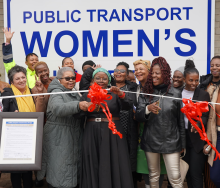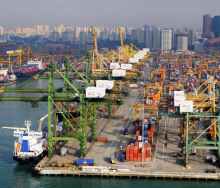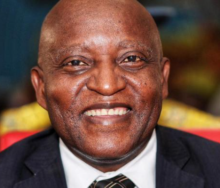President Cyril Ramaphosa has announced the government’s new emergency plan to confront South Africa’s electricity crisis.
During an address to the nation on Monday night, reminiscent of his Covid-19 “family meetings”, he outlined the emergency measures, which include combatting corruption, increasing Eskom’s maintenance budget, and encouraging private-sector, including homeowners’ investment, in renewable energy.
“During the past three weeks, severe load-shedding has disrupted all of our lives and caused immense damage to our economy. The daily power cuts we have been experiencing have inconvenienced millions of households and have presented huge challenges for businesses.
“After more than a decade without a reliable electricity supply, South Africans are justifiably frustrated and angry. They are fed up,” he said.
Ramaphosa said the government needed to take “bold, courageous and decisive action to close the electricity gap”.
He said the new plan had emerged after extensive discussions with Eskom management, energy experts, labour, business and community representatives over the past ten days.
He said the plan aimed to:
- Improve performance at Eskom’s existing fleet of power stations
- Accelerate the procurement of new generation capacity
- Massively increase private investment in generation capacity
- Enable businesses and households to invest in rooftop solar
- Fundamentally transform the electricity sector to position it for sustainability.
South Africa has installed capacity to produce approximately 46 000 MW of electricity and uses about 32 000 MW at peak times. However, only 60% of installed capacity is available at any given time due to unplanned maintenance and outages of the ageing infrastructure.
“The construction of our newest power stations, Medupi and Kusile, started late and they have experienced several delays and some design flaws. These challenges are being addressed,” he said.
“Eskom deferred essential maintenance to keep the lights on, which is causing breakdowns and failures now. The performance of some of Eskom’s power stations has been further worsened by extensive theft, fraud and sabotage,” Ramaphosa said.
He added that after years of state capture and mismanagement, a “capable and effective” management team was “working hard to turn the utility around and reverse years of decay”.
However, the country still faced an electricity shortage of up to 6 000 MW. In recent weeks, a combination of factors resulted in 18 000 MW of generation capacity being lost, and forced Eskom to implement stage 6 load-shedding.
“Eskom has to implement load-shedding to prevent the electricity grid from collapsing and to ensure that we never experience a complete blackout,” Ramaphosa said.
An agreement between Eskom and workers had allowed critical repairs to be completed and normal generation operations had resumed, while police had made progress tackling sabotage, theft and fraud at power stations and other key installations, he added.
The government has started to diversify generation by allowing parties other than Eskom to generate electricity.
Measures in place under the new plan to improve generation capacity include:
- The scrapping of licensing for private energy installations that feed into the electricity grid. However, projects must still be registered with Nersa.
- Eskom will buy electricity from independent power producers over the next three months.
- Eskom will import electricity from Botswana and Zambia which have excess capacity.
- Government departments will take a pragmatic approach when considering requirements to use locally manufactured inputs for green energy projects, which often cost more than imports.
- The amount of new generation capacity procured through Bid Window 6 for wind and solar power will be doubled from 2 600 MW to 5 200 MW. Additional bid windows will be expedited.
- Parliament will table legislation to remove the legal and regulatory obstacles to new generation capacity for a limited period. It currently takes almost 1 000 days to take a project from design to operation.
- Eskom’s budget for critical maintenance will be increased over the next 12 months for critical maintenance while National Treasury works on a proposal to tackle Eskom’s debt. Red tape for the purchase of maintenance spares and equipment will be removed.
- A feed-in tariff will be implemented to incentivise businesses and households to install and connect rooftop solar panels to the grid.
- Eskom will build its first solar and battery storage projects at Komati, Majuba, Lethabo and several other power stations, adding more than 500 MW to the grid.
Ramaphosa added that a National Energy Crisis Committee, chaired by the Director-General in the Presidency, Phindile Baleni, had been established to report to him directly on a regular basis.
“These measures are necessary to revive economic growth and create jobs. In the process, we will position our country as a leading player in the transition to new and sustainable energy sources, turning this crisis into an opportunity for future growth and resilience,” Ramaphosa said.













